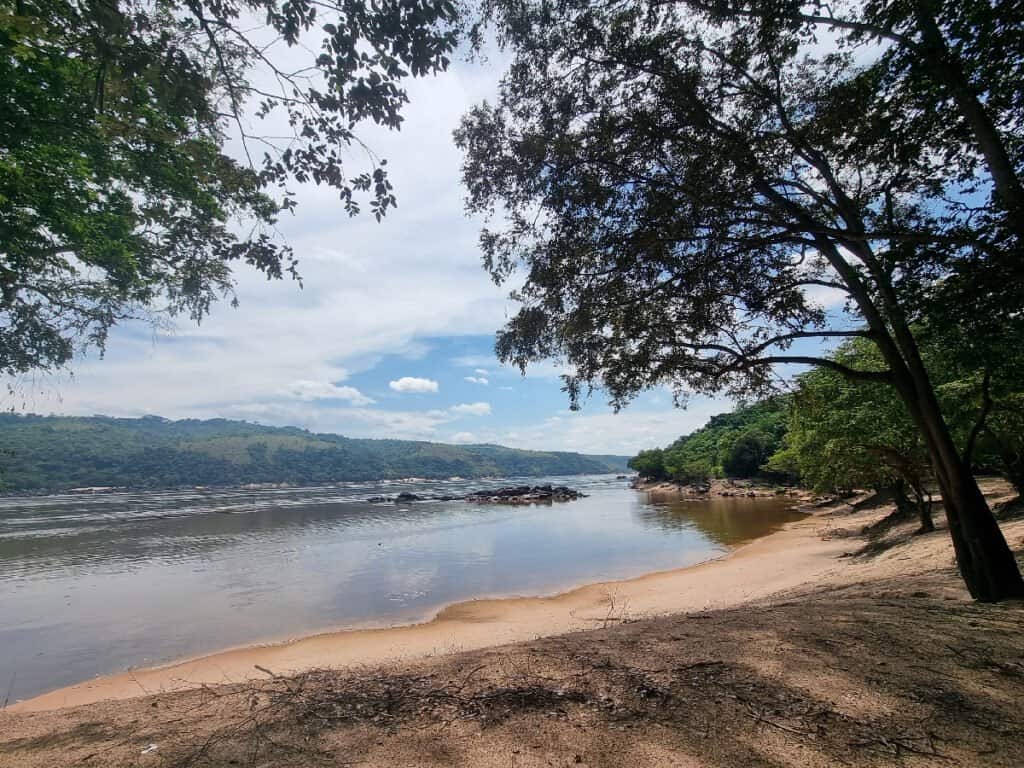The Mississippi River is one of the largest rivers in the United States, stretching for 2,320 miles from Minnesota to the Gulf of Mexico. While the Mighty Mississippi is long and deep, it is not the deepest river in the country. Today, we will look at the river 3x deeper than the Mississippi. We’ll show you where it is located, how deep it is, and more!
How Deep Is the Mississippi River?

The Mississippi River is at its deepest in New Orleans.
©Sean Pavone/Shutterstock.com
Before we find out about the river 3x deeper than the Mississippi River, we must consider the depth of the Mighty Mississippi. Like any river, the Mississippi River has varying lengths throughout its run. The headwaters of the river in Minnesota are only about 18 inches deep. Meanwhile, the river’s average depth throughout its run is between 9 and 12 feet.
The river’s greatest depth is 200 feet, and the body of water reaches this depth near Algiers Point in New Orleans, Louisiana. While that is impressive, two other rivers in the country are deeper. The St. Lawrence River is about 250 feet deep, making it the deepest in North America. However, this body of water is shared between the United States and Canada, so it’s often left off the list of the deepest rivers in the U.S.
The Hudson River is between 202 and 216 feet deep, reaching this point not far from the West Point Military Academy. This river is entirely in the United States, starting in Upstate New York and flowing to the New York Harbor. So, the Mississippi River is deep, but it’s not the deepest in the country.
Now that we have a good idea of the Mississippi River’s depth, it’s time to find out more about the river that is 3x deeper!
What Is the River 3X Deeper Than the Mississippi River?

The Congo River is the second-longest river in all of
Africa
.
©iStock.com/Fanny Salmon
| About the Congo River | |
|---|---|
| Length | 2,920 |
| Depth | 720 feet |
| Source | Lualaba River |
| Headwaters | Chambeshi River |
The Congo River is a river 3x deeper than the Mississippi River. The Congo River is about 720 feet deep, making it the deepest river in the world. This river runs for 2,920 miles when considering the Lualaba River, making it the second-longest river in Africa, only behind the Nile.
So, the river is more than 3x the depth of the Mississippi River. Since the maximum depth of the Mississippi River in the U.S. is only 200 feet, the Congo River would be closer to 3.6x its depth.
Where Is the Congo River on a Map?
As its name suggests, the Congo River flows through the Democratic Republic of the Congo. The body of water was called the Zaire River in the past. The portion of the river identified as the Congo River starts at the Boyoma Falls, a series of falls separating the Congo River from the Lualaba River.
Yet, the Congo River’s headwaters are in Zambia. The Chambeshi River flows from northeastern Zambia to Lake Bangwelu, contributing its flow to Lake Bangwelu. Eventually, water from this lake flows to the Luapula River, joining the Lualaba River.
The Upper Congo River starts in Zambia and flows to Boyoma Falls. The Middle Congo River begins at the Congo River at Boyoma Falls. This section of the river ends at the Malebo Pool, a wide, slow-moving portion of the river. The Lower Congo River picks up after the Livingstone Falls.
From there, the river’s lower portion flows out until it reaches its mouth at the Atlantic Ocean.
What Countries Does the Congo River Draw Water From?

The Congo River primarily flows through the Democratic Republic of the Congo.
©iStock.com/vistoff
The Congo River is known for being the only river to flow across the Equator twice. This body of water has a long, arching flow that takes it through the Democratic Republic of the Congo. However, the DRC is not the only country where the river flows.
The river’s drainage basin extends through 7 different countries, including:
- Angola
- Cameroon
- Republic of Congo
- Tanzania
- The Central African Republic
- The Democratic Republic of the Congo
- Zambia
The river, 3x deeper than the Mississippi River, is a massive body of water that serves as a border, a means of transportation, and a source of food and water.
What Animals Live In and Near the Congo River?

Gorillas are just one of the many animals that live in the Congo River Basin.
©Andreas Rose/Shutterstock.com
The second-largest river in Africa passes through several countries. As a result, multitudes of animals live along the river’s borders and within the river itself. A few of the animals that can be found in the Congo River Basin include:
- Crocodiles
- Elephants
- Chimpanzees
- Green mambas
- Gorillas
- Bonobos
- Leopards
- Peafowls
- Hippos
- Lions
Our list above highlights some of the most interesting and recognizable animals that live in this part of the world. Several are dangerous to humans, including hippos, lions, and crocodiles.
The Congo River has about 300 species of fish living in its waters along its entire flow. Some of the fish living at the bottom of the Congo River are:
People who live along the Congo River will catch and prepare edible fish in several ways.
All told, the Congo River is far deeper than the Mississippi River. The Congo River measures 720 feet deep at its greatest depth, but the Mississippi River only plunges 200 feet deep. Both rivers are large, long, and significant to the regions through which they flow.
The photo featured at the top of this post is © Joe Ferrer/Shutterstock.com
Thank you for reading! Have some feedback for us? Contact the AZ Animals editorial team.






